Is there any better way to spend your time than traveling the country? When it comes time to find a place to stay throughout your travels, you may want to consider dry camping. This guide was developed to help you learn more about the practice and what it takes to improve the overall experience.
WHAT IS DRY CAMPING?
Traveling the country in an RV or travel trailer can be a fun experience. Visiting various campgrounds that offer full hook-ups gives you the chance to enjoy your vacation comfortably.
However, for those that can’t find a suitable campground, weary road warriors should know there are other places to stay that don’t provide hookups for electricity, fresh water or sewer systems. This is what’s known as “dry camping”.
Not only can dry camping be a fun, safe, and enjoyable experience, it can cut down on campground costs considerably. Many places, like national forests, BLM land, and even parking lots can be great options for camping without hook-ups.
Dry Camping vs. Boondocking vs. Off-Grid Camping
Dry camping is also associated with other terms familiar in the RV world – ”boondocking” and “off-grid” camping. These two terms are usually associated with more remote types of travel, whereas dry camping can take place anywhere, even at an RV campground or parking lot.
Small travel trailers like teardrop campers are even allowed in most tent campsites and often used for dry camping.
The term boondocking actually originated from the Philippine Islands from the term “bundog,” meaning mountain. American soldiers brought it home and the term boondocking worked its way into American slang. It’s now transformed into what it means today – the practice of camping remotely without hook-ups.
So, in other words, all boondocking is considered a form of dry camping, but all forms of dry camping are not considered boondocking.
DRY CAMPING IN AN RV VS. TRAVEL TRAILER
When it comes to dry camping, any recreational vehicle can be comfortable without hook-ups. However, dry camping in an RV versus a travel trailer has its differences.
Travel trailers are basically designed for camping with or without hookups. Vistabule’s teardrop trailers, for example, can come equipped with solar panels so that batteries stay operable as long as the sun is shining.
This allows you to pull over and camp pretty much anywhere, while still retaining many of the comforts of home. RVs on the other hand, often require hook-ups to operate at full capacity, and you’ll be paying a hefty connection fee on top of that.
Additionally, they’re not as versatile as a towable trailer when it comes to off-roading or handling tight roads and rugged terrain.
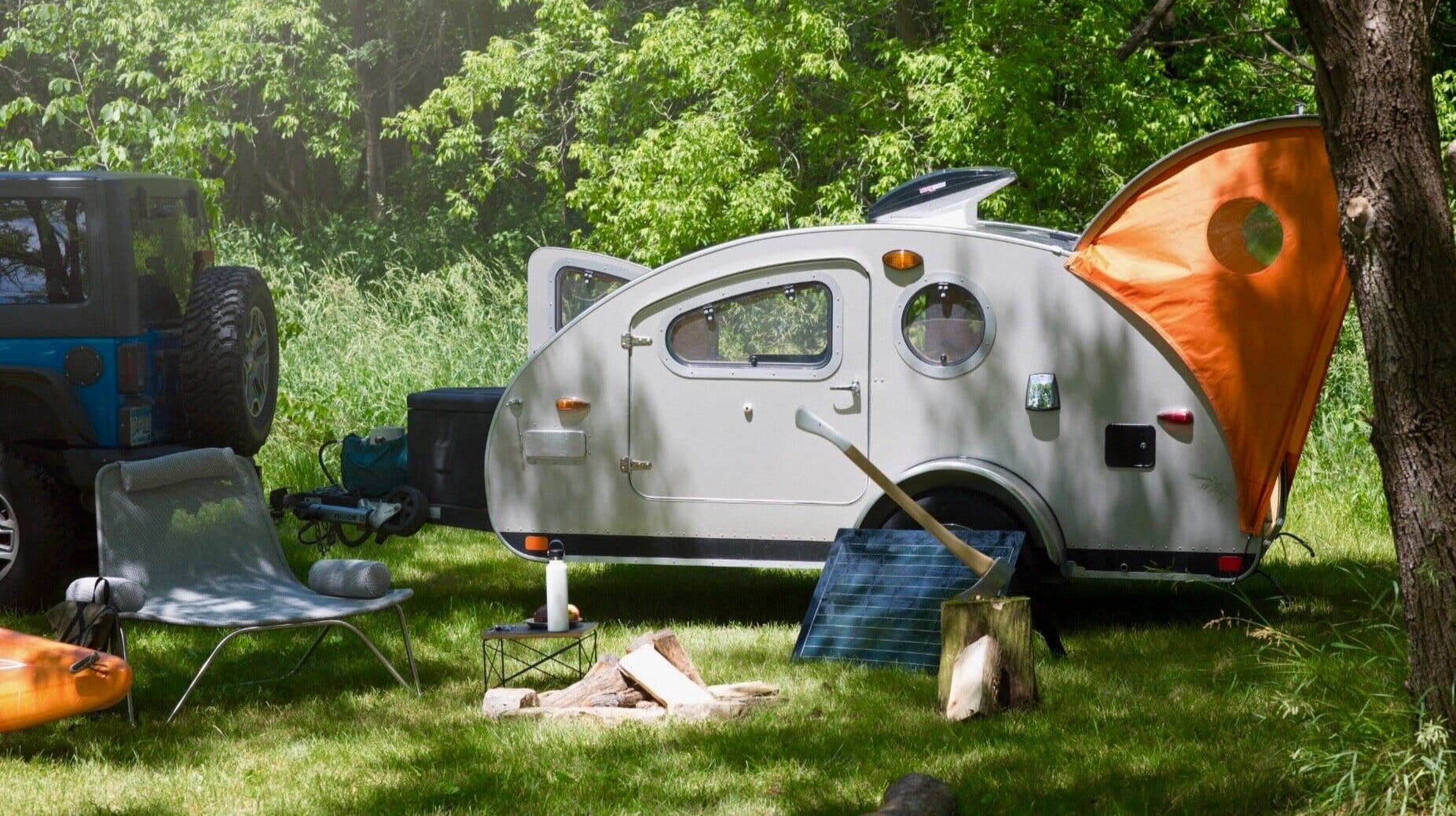
When it comes to dry camping, any recreational vehicle can be comfortable without hook-ups.
FINDING THE BEST DRY CAMPING LOCATIONS
If you’re looking for an ideal dry camping location, look to the following resources:
- USFS Website: The United States Forest Service provides plenty of information on both free and paid dry camping locations through their website. National forests and parks are the perfect spot for boondockers, as you can pretty much pull over anywhere within the boundaries and camp.
- Bureau of Land Management (BLM) Website: BLM supplies maps of available public lands in the U.S.
- State Parks: Many state parks’ websites will have resources for dry campers, depending on where you are.
- Campendium: This website and app supplies users overnight dry camping spots throughout the country, outside of public lands.
- Harvest Hosts: A membership platform that connects RVers with private landowners who provide space for dry camping.
- Boondocking: Allows you to share and find auto-accessible camping. Combining a mapping program and a GPS, you can find free camping on your favorite public or private lands.
- FreeCampsites.net: A free resource, while not as user-friendly as Campendium, it still has a map and is a good alternate option.
- Campground Reviews: From KOA campgrounds to RV parks, this website provides a place to share unbiased reviews and experiences. Many reviews from public campgrounds, including National and State Parks and reviews for US and Canada.
- US Public Lands App (IOS or Android): This app provides map overlays of many public land boundaries to inform users who own that land. Some locations are simply off limits for dry campers, and this app helps you know where it is and isn’t allowed to camp.
- Camp Finder: Makes it easy to find campgrounds, RV parks and RV resorts while you are on the road. Check over 19,000 campsites for rates, amenities, camping discounts, contact details, photos and camping reviews
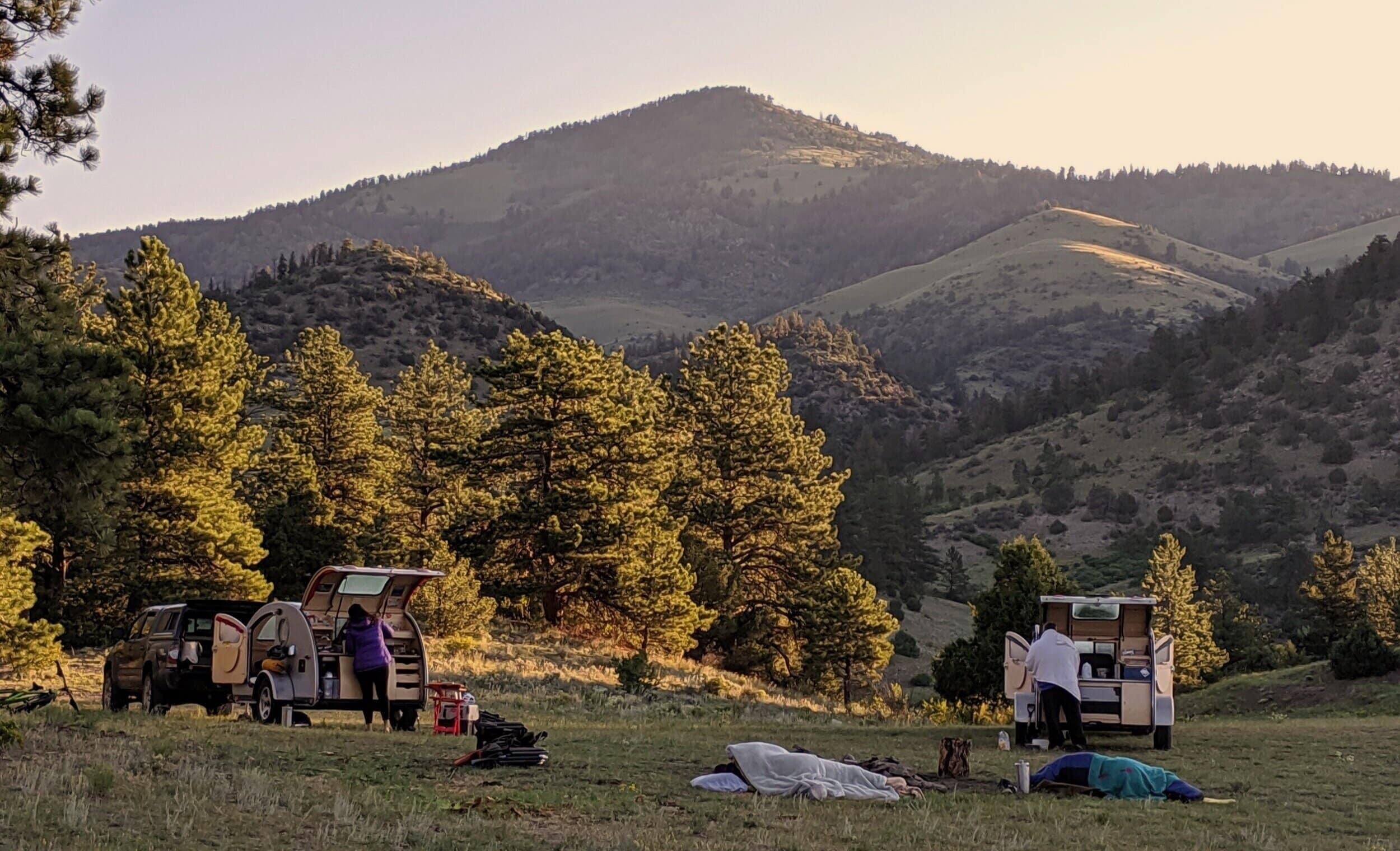
National forests and parks are the perfect spot for boondockers, as you can pretty much pull over anywhere within the boundaries and camp.
DRY CAMPING TIPS
When dry camping, you’ll be without hook-ups, but that doesn’t mean you can’t still have a comfortable stay, no matter where you are. Try out some of the following tips to improve the overall experience.
Electricity
In order to conserve electricity, switch out regular bulbs for LED lights, which are longer lasting and draw less power. Always remember to shut off lights when not needed, and open windows instead of running air conditioning.
Many devices can cause phantom loads on the electrical system, so unplug any devices that are not being used like clocks, stereos, and TVs.
Bring along a backup generator or alternative power source in case you run out of electricity and can’t find a hook-up nearby. Choose a quiet model so you can run it at night without noisy distractions.
Water Conservation
Water is the most crucial item to keep track of while dry camping, as you may not have a fresh-water source once you run out. Conserve water by taking short showers, switching to low-flow faucets, and clean with wet wipes rather than wet rags.
Bring along a five-gallon water tank for backup so you have an emergency option should your supply run out.
It’s best to not fill up with water until you’re close to your destination. Make plans in advance to find a water source near where you want to camp, either at an RV filling and dump station, campsite, or gas station.
This also helps on the return trip, as you can dump your tanks before you move on with your journey.
Fuel and Propane
In order to keep fuel and propane levels normal, pick foods that have a longer shelf life, don’t require cooking or can be heated up over fire.
Another good idea is to pack some pre-made meals that can be tossed on the grill or open flame. Don’t forget the s’mores!
For those traveling in winter or colder weather, consider cozying up with some extra blankets rather than blasting the heat 24-7 so you can conserve precious fuel sources. When possible, try heating only one area of your RV, if you need to warm up.
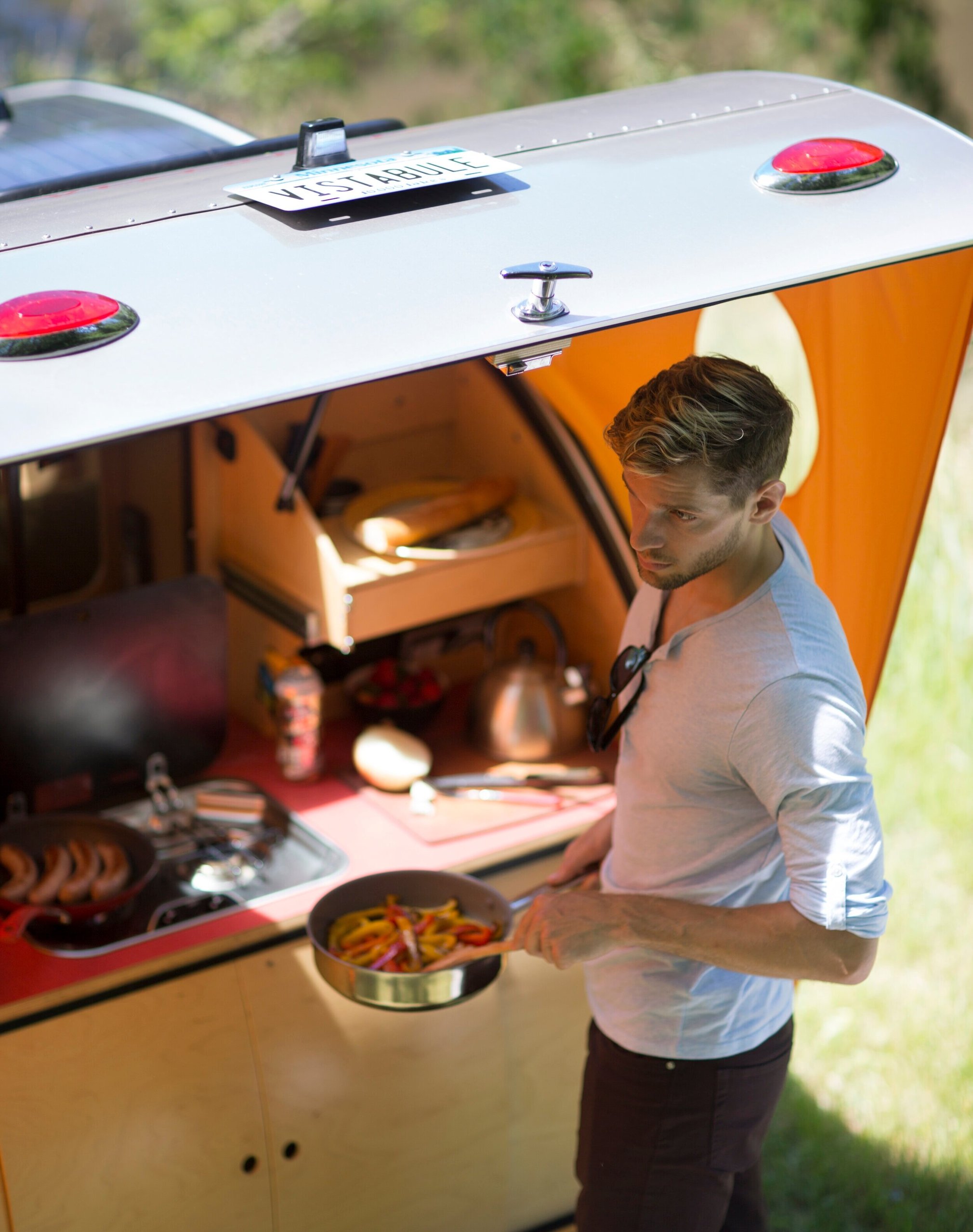
Wastewater
When dealing with wastewater and no sewage hook-ups, you will first need to know how long you can go before having to empty your black water tank. Try to start your dry camping trip completely empty so you can maximize its use.
Use campgrounds, gas stations, or rest area toilets to conserve space in the tank. Check your wastewater tanks on a regular basis to ensure that they aren’t getting too full.
When it comes time to dump your wastewater, you can find an appropriate place on the website, Sani Dumps, a comprehensive directory of recreational vehicle dump sites. Or you can dump your waste at an RV park. Some stations are free, while some require a small fee, so bring along some cash in case.
Consider Solar
If you plan on doing a lot of dry camping, solar panels can help considerably with power. Powered by the sun, solar systems keep your batteries recharged indefinitely, even when you’re not at your RV.
Bring a Signal Booster
Cell phone coverage can be weak at best in remote dry camping areas, so bring a signal booster to ensure that you can always stay somewhat connected. Or, consider buying a satellite phone that can connect anywhere in the world.
Know Your Limitations
Not only personally, but your RV as well. Before taking off on a dry camping trip, practice living off your tanks and batteries to understand those limitations.
This gives you an idea of how long you can expect things like battery life, water, and fuel to last. You can try dry camping a few nights in your driveway, or even practice with shorter trips and extend them gradually.
Remember Trash Disposal
As part of the dry camping lifestyle, you should abide by the Leave No Trace ethos. This simply means cleaning up any litter, tidying the campsite, and not damaging property.
You’ll also want to dump any trash before hitting the road again, so pinpoint any dump stations or gas stations nearby where you can unload.
Use Technology to Your Advantage
Use one of the many resources listed above like an app or website to your advantage. There’s a huge community of dry campers, boondockers, and off-the-grid RVers that stay connected through these programs and can help you if you’re ever searching for a place to stay.
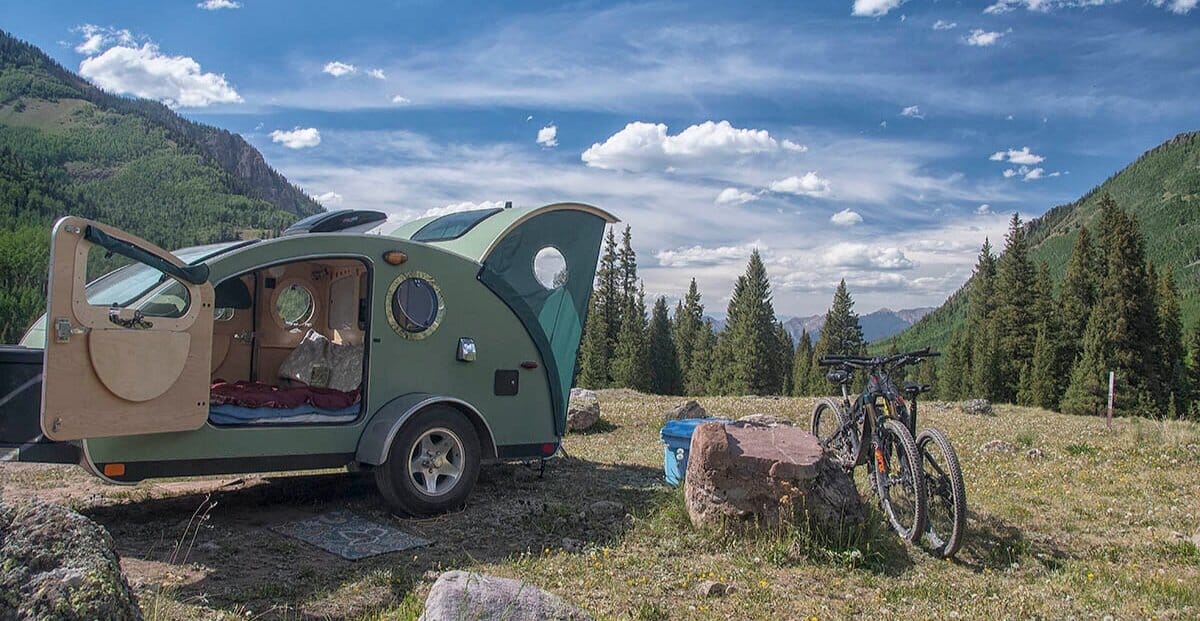
When dry camping, you’ll be without hook-ups, but that doesn’t mean you can’t still have a comfortable stay, no matter where you are.
GIVE DRY CAMPING A TRY
For those RVers looking for a new adventure, dry camping provides that opportunity. From urban campgrounds to the remote wilderness and beyond, dry camping has grown in popularity because it provides a fun, safe, and enjoyable experience for campers while giving them the freedom to travel to more places.
Are you looking for the ideal dry camping vehicle? Then get in touch with Vistabule. Our team can craft your very own teardrop trailer from the ground up, so you can try dry camping for yourself, without leaving the many luxuries of home.
From creative cooking solutions in the galley kitchen to relaxing cabin interiors to stylish yet utilitarian performance options, it’s all possible when you work with Vistabule.
Contact us today to find out how our teardrop configuration process is designed to serve you. With many custom options, you’ll be ready to travel to uncharted destinations with maximum comfort, style, and usability. Download the pricing worksheet below or get in touch with our team today to learn more.
Related Posts
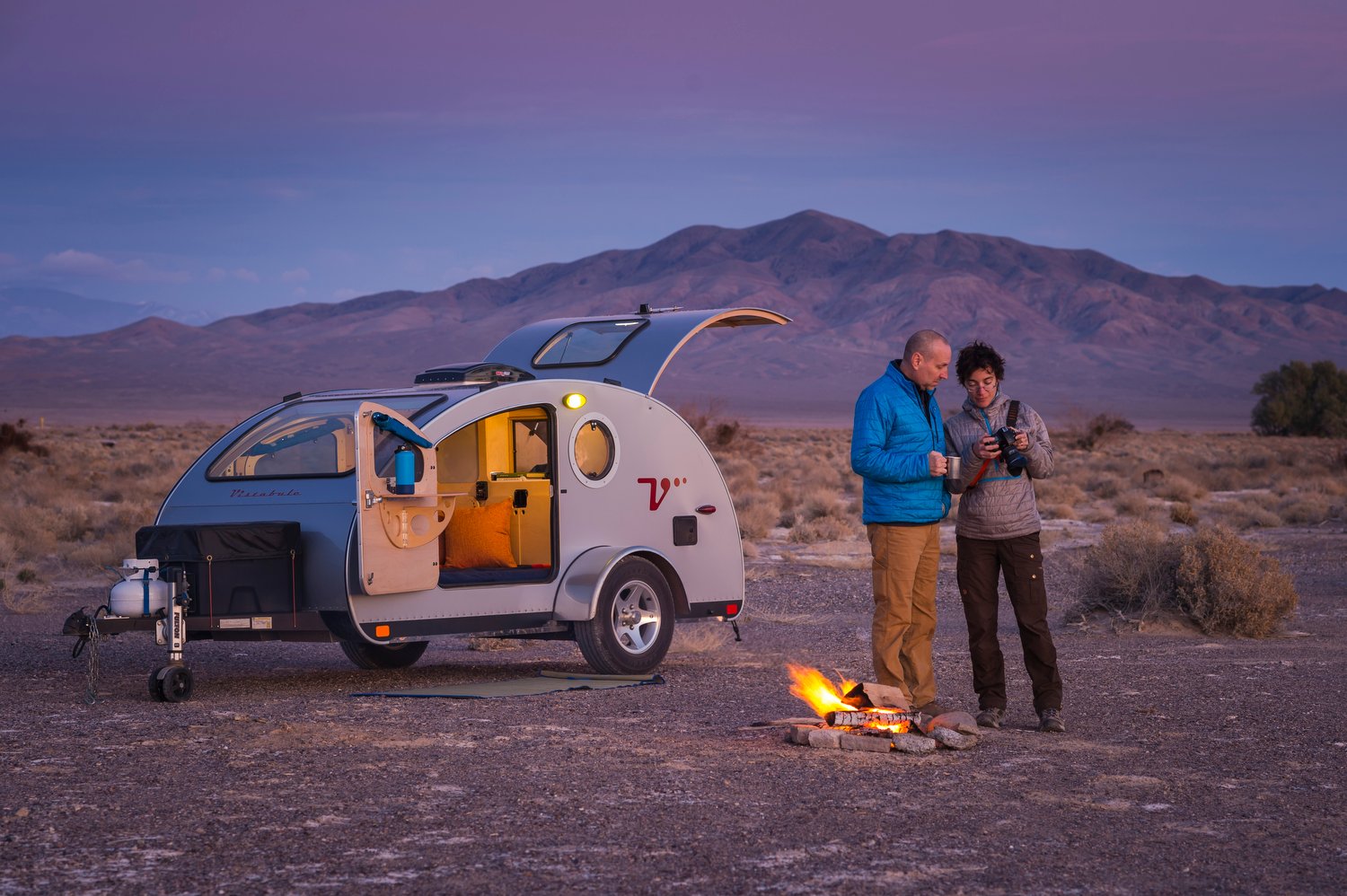
Meet Our Photographers
Kurt and Edwige Moses have been capturing beautiful images of our trailers for us for many years now, and are Vistabulers themselves. When seeing one of our trailers in person isn't an immediate option for a potential customer, we rely greatly on the Moses' talent and keen eye to help tell our story and showcase what makes the Vistabule and DayTripper so special. We'd love for you all to learn a little bit more about these two. So without further ado, Kurt and Edwige!
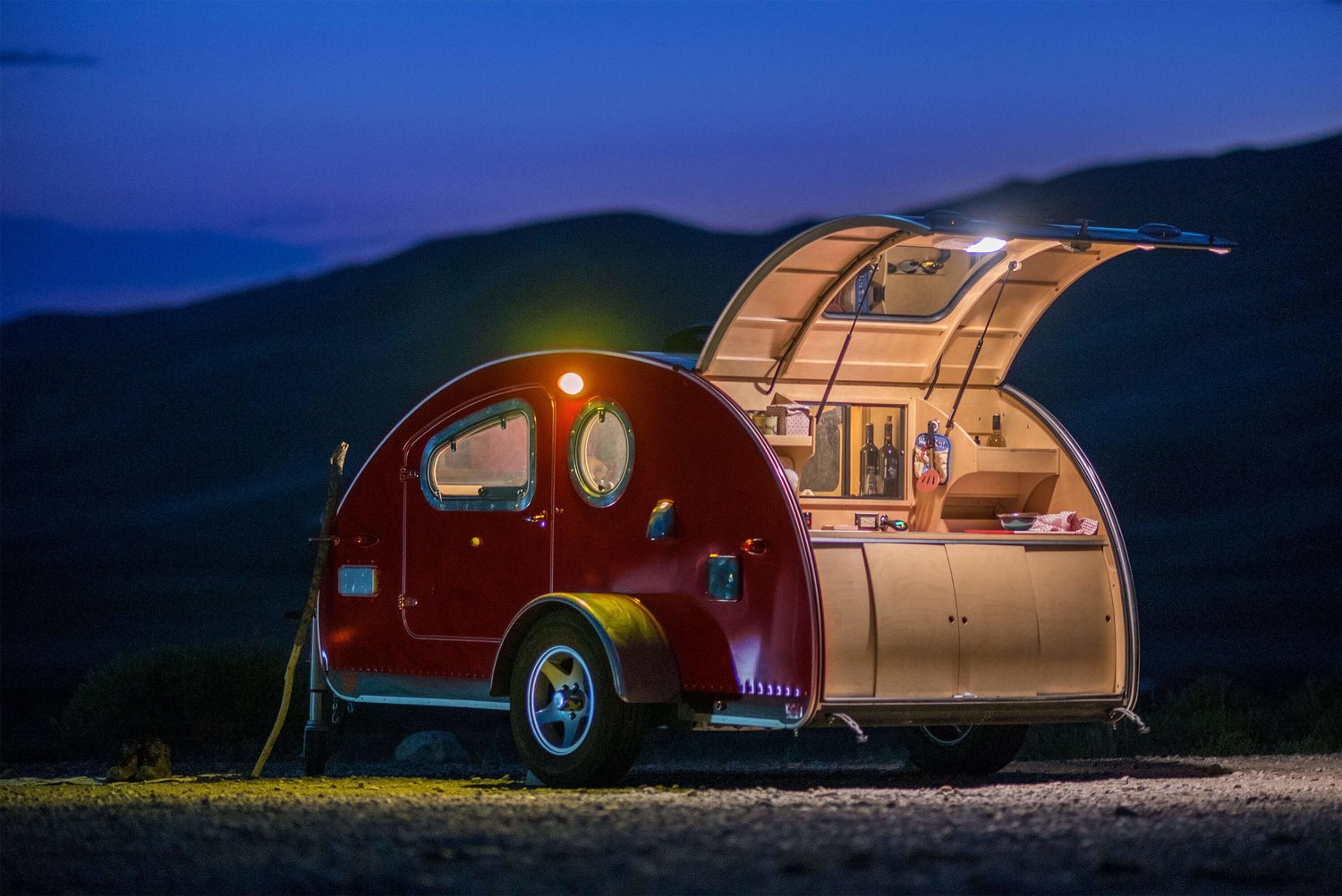
Teardrop Camper Lighting: A Full Guide
Having great teardrop camper lighting is an important part of the camping experience. Lighting adds ambience and can set the tone for a good night spent with family and friends. With so many options on the market it can be tricky to know what types of lighting are best for you and your trailer. In this blog, we cover the different types of teardrop lighting to help you find ways to level up your trailer.

Top 5 State Parks for Incredible Birdwatching
We think that the Vistabule and DayTripper make for excellent companions when it comes to birdwatching. So whether you consider yourself a casual hobbyist or hardcore birder, consider bringing a teardrop trailer along for the ride. Read on for our recommendations on the Top 5 State Parks for Birdwatching!